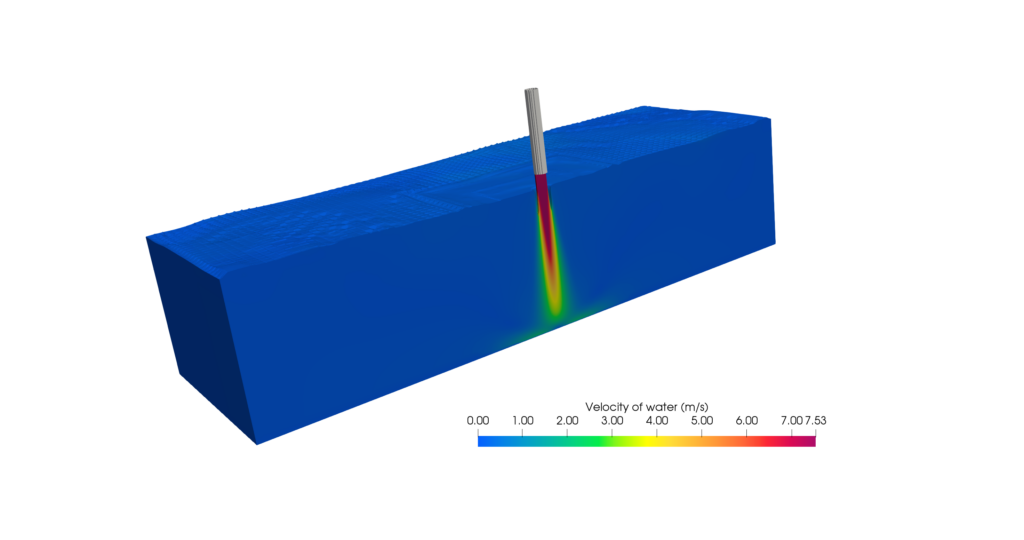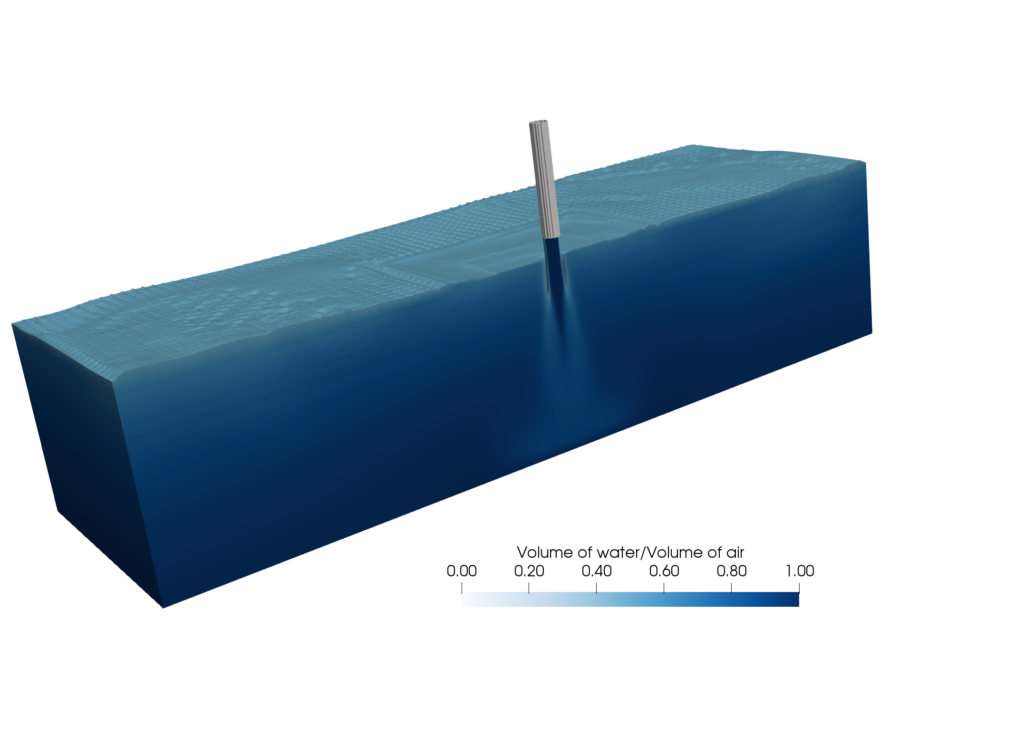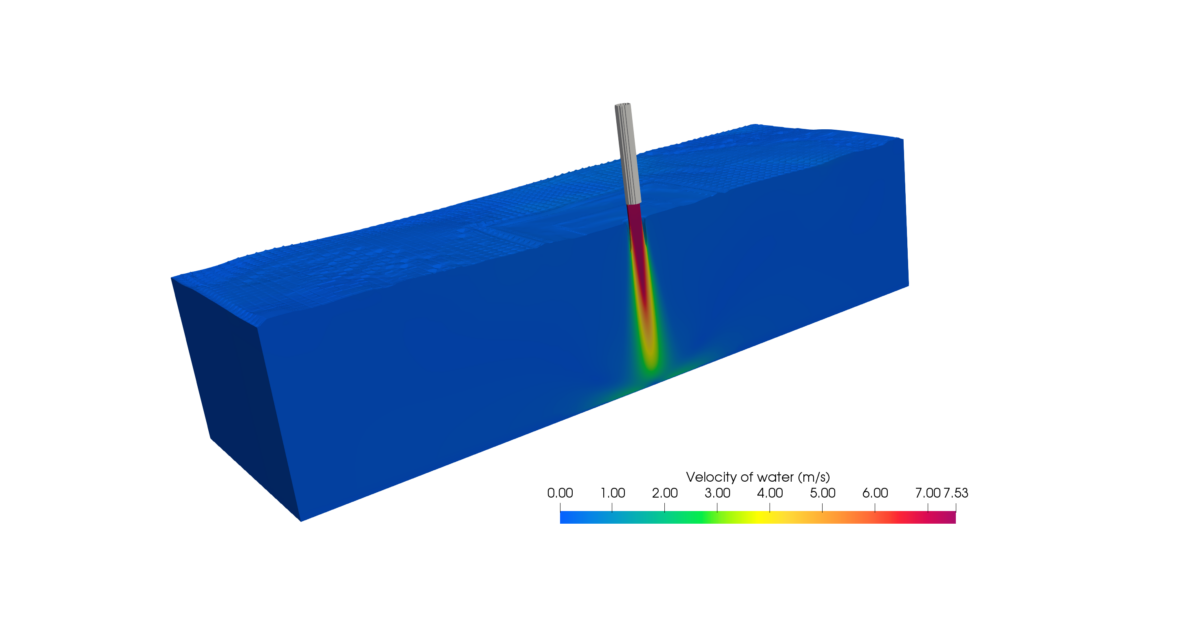(António Maria de Afonseca Portela Roseira Muralha, LNEC)
Description/ Scientific objectives and goals:
Dams over the world involve very specific features, namely in what concerns the hydraulic safety appurtenances such as the spillways.
Spillways generate high velocity water flows, a particular case being water free jets strongly impacting rocky river beds downstream. The flow conditions, velocity and pressure, at the jet impact zone may lead to scour of the river bed.
The present research focuses on scour due to high velocity jet actions based on suitable CFD simulations calibrated and validated by means of experimental simulations. A new methodology to characterize the scouring process will be implemented in the CFD simulations using OpenFOAM.
The main goals of the numerical CFD simulations are: simulate flow conditions of the existing experimental facility at LNEC; compare the experimental results with the ones obtained numerically, validate the CFD parameters; implement a technique that allows a simulation of the rock scouring process; finally, validation of the developed methodology for scouring analysis considering field data from real an existing dam with jet spillway produced scouring.
Computational Requirements:
…

Velocity of water – Numerical simulation of the experimental facility.
Cross section of the velocity field generated by a 12.0 m/s jet
impinging at a plunge pool with 0.8m of water height.

Volume of water / volume of air – Numerical simulation of the
experimental facility. Cross section of the flow generated by a 12.0 m/s
jet impinging at a plunge pool with 0.8m of water height.
his work was produced with the support of INCD funded by FCT and FEDER under the project 01/SAICT/2016 nº 022153
